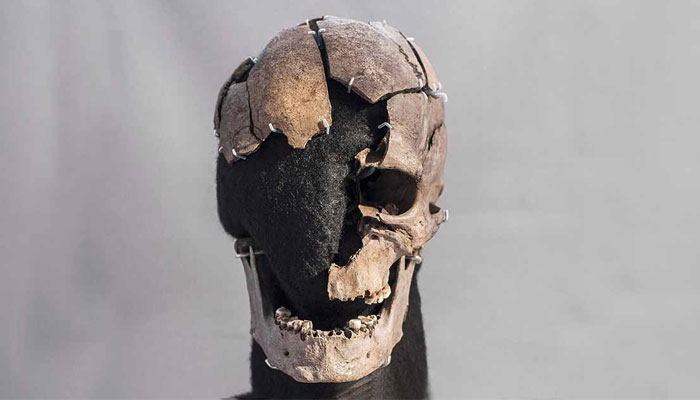‘Vittrup man’ travelled from Norway to Funnel Beaker society in Northern Denmark sometime between 3100 and 3300 BC

A mysterious ancient skeleton known as the “Vittrup Man” was discovered in a peat bog in northwest Denmark in 1915.
Now, more than a century later, scholars have finally put together the strange events of his life as well as his brutal death, the Miami Herald reported.
The remains, which include an ankle bone, a shin bone, and a partial skull, were recently subjected to an in-depth genetic analysis, according to a study published on February 14 in the journal Public Library of Science (PLOS) One.
Through this study, researchers have determined that the man was likely short in stature, dark in complexion, and had blue eyes.
He must have been in his early 30s when he died sometime between 3100 and 3300 BC.
Researchers claim that he may have been born somewhere near Norway or Sweden. He seems to have lived as a hunter-gatherer and fisherman, feeding on marine species such as seals and whales, before switching to a farming lifestyle, perhaps after moving among the Funnel Beaker society that inhabited northern Denmark.
According to experts, this civilisation was “well established” at the time, characterised by “cultural bloom” and economic luxury.
The reason for this move is unknown; however, what is known is that he did not survive here for long.
He was brutally killed after a few years of living in the rural Funnel Beaker culture. A weapon—perhaps a wooden club found near his remains—was used to inflict at least eight blows to his head, shattering his skull, researchers said.
Much of his body, including his limbs and torso, likely decomposed in the bog over time, though it’s possible they were deposited in the bog in parts.
Researchers claimed that human sacrifice, which was once a frequent practice in Denmark’s bogs, was most likely the cause of his death.
A “dubious honour” that involved human sacrifice was frequently imposed on outsiders, including individuals with great social standing.
The fragmented skull of “Vittrup Man” is on display at Denmark’s Vendsyssel Historical Museum.

